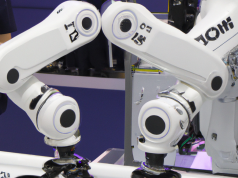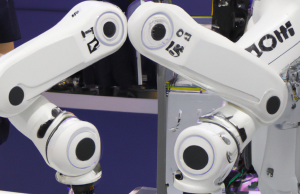Have you heard that most AI ventures are unsuccessful in achieving active usage or implementation? Could you tell me why this is usually the situation?
Many companies have devised new concepts for using AI to enhance customer service or simplify processes. The real difficulty comes in taking that concept and bringing it from an idea through development and into actual use. OpenAI’s ChatGPT is an effective example of how not only AI can be legitimately useful, but also entertaining.
Many organizations have had unsuccessful or not accurate outcomes with their endeavors, likely because they have made the same errors. The following ideas should help enhance the possibility of success.
Begin in a favorable way.
AI development is hampered by mismanaged planning and engineering issues. Most executives today learn about AI from the news, which typically suggests that AI can do wonders or can be implemented almost immediately with a few minor adjustments.
Executives feel like they have to act quickly on AI due to its potential to reduce costs, increase profits, and maximize revenue. However, many do not have an adequate understanding of the required timeline, expenses, and resources for the project to be effective. Competitors have already started the process, which adds to the pressure to move quickly.
Given the lack of expertise in the engineering field, the most sensible initial step would be to appoint data scientists to outline and foresee any obstacles the team may have to confront. Nevertheless, most of the time, these data scientists are unfamiliar with that particular area of expertise.
A data scientist coming into a new company with the target of streamlining and improving the business typically attempts to deliberately gather enough data to initially demonstrate that there is use in establishing AI. Upon achieving a successful demonstration project, the team frequently runs into problems with their data handling. The enterprise may not be collecting, preserving or managing the data in a form that is suitable for AI.
For example, if a manufacturing facility desires to incorporate AI to examine for faults on an assembly line, it can quickly demonstrate a project with one camera on a machine in a couple of minutes. However, for that project to be implemented for routine use, it must upgrade from the single camera test to having 500 cameras used nonstop. This will likely take many months or even a few years to acquire the full advantage the AI offers in the experiment.
Executives should maintain a clear idea of which issue needs to be resolved as well as to have a compelling financial incentive in mind. A victorious AI core team should include three important roles: a data scientist, a data engineer and an expert in the given domain – all having an equal share in accomplishing the mission.
Beginning with an emphasis on data
You don’t need to use complicated algorithms or models to get the first AI project in an organization successful. AI is essentially using automation to gain knowledge, like any other process of automation you should guarantee the success of one or two samples by going through a laborious process in a state which is not very expandable.
At the outset, the data engineer will create some prototypes with data and the domain specialist will transform them into concrete examples. This step will expose the core of the AI procedure. The enterprise will possess raw data and an ultimate objective, and then they will require a sample, which is the output data as it is expected to be.
This process is referred to as data development; the methodology relies heavily on data as there is no modeling being performed. Compared to the model-first approach, the data-centric approach has multiple benefits, such as
- It necessitates fewer funds;
It harnesses the organization’s proficiency (procedures, data, specialized knowledge);
It is more expeditious; and
It reduces the chance of failure.
Once a select number of tasks have been done by hand, the business can prepare to put the AI into action.











